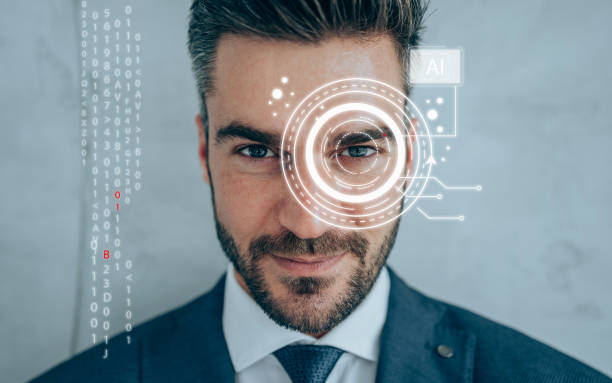
Female hands holding phone with face ID scanning on the screen in room home
With an increased document forgery and identity theft, the onboarding process of businesses and firms has been affected a lot. Stolen credentials of the users can lead to account takeover fraud, money stealing, and paperwork designed according to their information. To combat such scams, electronic ID verification is an advanced solution to such fraudulent activities; meanwhile, the manual verification system is time-consuming.
In a survey from 2021 with people working in various industries worldwide, about half of them believed that using fingerprints or facial scans would be extremely important for digital IDs. Their opinion on the advanced digital verification system was innovative and suggested electronic ID verification.
What is Electronic Verification? A Quick Glimpse
An electronic verification system is a framework that helps organizations or firms identify users digitally. It uses innovative technology to check customers’ authentication. It is the online identification of the person through identification checks. Advanced techniques like Machine Learning (ML) and Artificial Intelligence (AI) are used for electronic verification services. Machine Learning has improved the performance of electronic identification verification in recent times. At the same time, Artificial Intelligence has ensured the accuracy of the system through its algorithms.
Electronic Verification of Identity – An Up-to-Date Process
Electronic identity verification is an advanced way to check the authenticity of the customer using different technologies, and it involves different steps at various levels, which are described below:
Data Accumulation
The first step in electronic ID verification includes gathering the credentials of potential customers who are acquiring services. The required credentials that are needed for executing the authentication procedure include name, proof of address, identification number, and passport.
Confirmatory Data Analysis
The information provided by potential customers is checked against authorized databases, which ultimately gives validation or confirmation about the authenticity of submitted documents.
Document Inspection
Most essential documents, such as passports, government-issued ID cards, and related ones, are checked through OCR techniques to detect any signs of forgery.
Biometrics Authentication
In potential industries, electronic ID verification utilizes biometrics authentication, which checks facial features by properly scanning the iris and analyzing facial characteristics.
Database Assessment
The system checks the user’s information against various databases of bureaus, government, and watchlists to ensure if there is any risk associated with the customer or not.
Risk Evaluation
Customer risk evaluation is conducted in financial institutions and related businesses through their associated profile scores. The risk evaluation score is decided on the basis of their previous financial history. High risk customers would be identified as fraudster as a result in the evaluation procedure.
Making a Final Decision
Finally, the electronic ID verification decides the authenticity according to the risk evaluation results. The decision could demand the user’s approval, or denying in accordance with the identified risks.
Reporting
Throughout the electronic ID verification process, the team prepares an audit report to ensure compliance with regulatory measures of identity verification. The identified entities would be reported to the relevant departments for taking legal action against them.
Use Cases of Electronic ID Verification in Potential Sectors
As the digital world is evolving, electronic ID verifications have diversified in everyday life. Authentication plays a pivotal role in every firm and organization because of the increased scams and monetary losses. So, in these conditions, electronic identity checks have been introduced by EVS to make the system secure and reliable and its application has been seen in daily life.
Financial Industry
In the financial industry, banks and economic institutions employ electronic identity verification (electronic verification) processes to facilitate Know Your Customer (KYC) and Anti-Money Laundering (AML) compliance procedures. By utilizing electronic verification, these institutions assist in streamlining the verification of customer identities to ensure that they comply with regulatory requirements while combating the risk of fraudulent activities.
Health Care Industry
In the healthcare industry, electronic ID verification is utilized to verify the identity of patients and healthcare providers. These systems help prevent clinical identification theft, reduce insurance fraud, and ensure the accuracy of patient information. Overall, it improves the security and efficiency of healthcare services.
E-Commerce and Retail Industry
In the e-commerce and retail industry, electronic ID verifications are employed to verify the identities of customers during account creation, sales, and purchases. By using these systems, online retailers can enhance security measures to prevent fraudulent transactions by ensuring a secure and reliable shopping experience.
The Bottom Line
Electronic ID verification has streamlined identity impersonation fraud by providing accurate solutions. These verification solutions utilize machine learning algorithms and artificial intelligence protocols. These fast-detecting algorithms identify anomalies and counterfeits in real time, resulting in the reporting of imposters to legal departments for taking strict actions against them. In today’s era, eIDV has contributed well to potential industries by enhancing their efficiency in an enhanced way.







